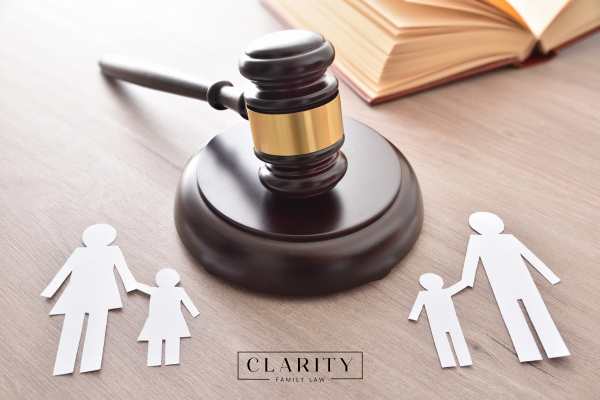Navigating the complexities of child custody can be one of the most challenging aspects of a divorce or separation. Understanding the difference between legal and physical custody is crucial for parents seeking to establish a stable and supportive environment for their children.
Legal custody refers to the right to make important decisions about a child's upbringing, including education, healthcare, and religious instruction. In contrast, physical custody determines where the child will live and who will be responsible for their day-to-day care. Both types of custody have significant implications for the well-being of the child and the dynamics between co-parents.
If you are facing a custody dispute or need guidance on how to best support your child's needs during this transition, it is essential to consult with an experienced family law attorney. Call our firm at (313) 513-1919 to schedule a free consultation with a custody lawyer in Dearborn and learn how we can assist you in achieving a fair and beneficial arrangement.
Definition of Legal Custody
Legal custody is exactly what it sounds like, the parent can make major decisions regarding their child. Examples of these decisions can be where the child goes to school, their medical care, and what religion they are raised in.
Sole Vs. Joint Legal Custody
There can be either sole or joint legal custody. With sole custody, only one parent will be able to make these major decisions regarding their child. This will remain the case even if the child spends significant time with their other parent.
If there is joint custody, both parents will have to work together to make any legal decisions regarding their child. They will need to agree and both sign off on it if any legal decision is to be made.
Definition of Physical Custody
As for physical custody, it defines who the child lives with the majority of the time. With sole physical custody, the child still might see the secondary parent, but they will likely have significantly less parenting time than the primary parent.

In these situations, the custodial parent will typically receive child support payments from the non-custodial parent.
If the parents have joint physical custody, this means that both parents get roughly the same amount of parenting time. This also means that they will share the responsibilities associated with physical custody including day-to-day care and living arrangements.
What Factors Are Considered in Custody Decisions?
When the courts are deciding which parent to award custody to, there are multiple factors that they will consider.
Any history of abuse will be considered as will the parent's relationship with the child. Outside of this, work schedules and the financial situation of each parent will be considered.
All of these considerations are to determine which custody arrangement will be in the best interest of the child. For example, if both parents earn a similar amount and can maintain a similar standard of living but one works less and would have more time with the child, they might be awarded more physical custody.
Pros and Cons of Different Types of Child Custody
Each of the types of custody has advantages and disadvantages that are important to consider when coming up with your final custody arrangement.
Sole Legal Custody
The advantage of sole legal custody is that you do not have to consult the other parent to make major decisions. This can help to reduce child custody issues due to conflict in the long term.
The downside of this is that it can reduce one parent's involvement in the child's life. Over time, this can increase resentment and can make it more difficult for the parent without sole custody to do things like seek medical treatment or register the child for activities.
Joint Legal Custody
The advantage of joint custody is that both parents will have input into their child's life. This helps to maintain parent involvement and can keep a better environment for the child.
The downside of this is that if the parents do not have an amicable relationship, every decision can quickly turn into a custody battle. This is why it is important to come up with strategies regarding how you and the other parent will handle decisions.
Sole Physical Custody
With sole physical custody, one parent will have all or the vast majority of the parenting time with the child. The other parent may have visitation rights, but they are typically pretty minimal.
The advantage of this type of custody is that the child will have a more stable home environment and won't be faced with having to travel back and forth frequently. This can make school and extracurricular activities easier since you will not have to consider where the child will be each week.
Joint Physical Custody
With a joint physical custody arrangement, both parents will have a roughly equal amount of with the child or children. The way that the parenting time is split up will depend on how close the parents live to each other as well as their personal preferences.

The advantage of joint custody is that the child will be able to spend plenty of time with each parent. This can help to ensure that the child maintains close relationships with both parents.
The downside is that it can be a more stressful environment in which the kid has to move back and forth all of the time. There is also the potential to generate more conflict with having constant contact with the other physical custody parent.
Can You Modify Custody Arrangements?
When a custody arrangement is made, the decision-making process is done based on the present circumstances. If those circumstances change in the future, the custody agreement can be modified.
Examples of situations in which child custody matters can be modified include a change in finances, living arrangements, health care needs, or anything else that could significantly affect the well-being of the child.
At that point, you will want to work with an experienced child custody lawyer to file a motion for the child custody arrangements to be changed. Based on your circumstances, they will be able to give you legal advice on how to change the agreement and what your legal options are.
They will then walk you through the process of going to court and requesting the modification.
Call Clarity for Help With Custody Cases
There are multiple types of child custody and each has some key differences that are important to consider. There are both physical and legal custody, physical concerning where the child will live, and legal who gets to make major decisions about education and other important topics.
Within those, you can have joint or sole custody. Sole custody means that you are the only parent living with the child or making decisions. Joint custody means that these rights are shared. You can also have different combinations of these. So while you may have sole legal custody, you might only have 50-50 physical custody of your child.
If you are going through a custody dispute or filing for custody for the very first time, you will want to work with an experienced family law attorney.
